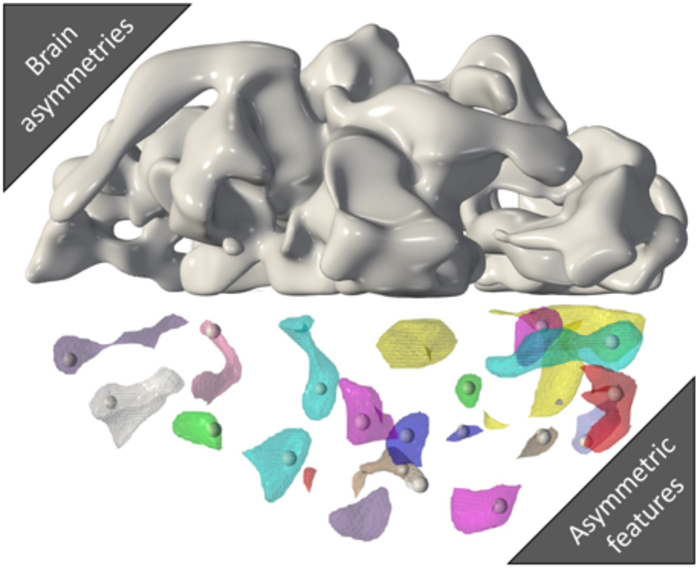Researchers led by Mark Eckert at the Medical University of South Carolina, United States, report that two seemingly opposing theories of language processing are both correct. Publishing in the open-access journal PLOS Biology on April 5th, the study shows that greater left-brain asymmetry can predict both better performance and average performance on a foundational measure of reading ability, depending on whether analysis is conducted over the whole brain or in specific regions.

Credit: Federico Iuricich (CC-BY 4.0, https://creativecommons.org/licenses/by/4.0/)
Researchers led by Mark Eckert at the Medical University of South Carolina, United States, report that two seemingly opposing theories of language processing are both correct. Publishing in the open-access journal PLOS Biology on April 5th, the study shows that greater left-brain asymmetry can predict both better performance and average performance on a foundational measure of reading ability, depending on whether analysis is conducted over the whole brain or in specific regions.
Being able to fluently convert written symbols into speech sounds is a basic aspect of reading that varies from person to person and is difficult for individuals with conditions like dyslexia. While structural asymmetries between the right and left sides of the brain seem to be related to this ability, exactly how remains a mystery. Using structural MRI from over 700 children and adults, along with a reading test of pseudo-words and a mathematical method called persistent homology, the new study tested two opposing theories of how brain asymmetries should affect phonological processing.
The researchers developed a way to determine levels of brain asymmetry from the MRI images using persistent homology. They found that when the location of each individual’s most asymmetric region was considered, greater left-brain asymmetry was related to better pseudo-word reading ability. This supports a cerebral lateralization hypothesis. At the same time, they found that greater left-asymmetry in specific regions – including a motor planning region called Brodmann Area 8, and a performance monitoring region called the dorsal cingulate – were associated with average reading ability, which supports a canalization hypothesis.
Of note was that pseudo-word reading ability was not consistently related to asymmetries in brain regions known to be important for specific language functions. How left/right structural asymmetries affect other types of reading abilities and influence the functions of a left language network remains to be studied.
Eckert adds, “Our findings indicate that, at a population level, structural brain asymmetries are related to the normal development of a speech sound processing ability that is important for establishing proficient reading.”
#####
In your coverage, please use this URL to provide access to the freely available paper in PLOS Biology: http://journals.plos.org/plosbiology/article?id=10.1371/journal.pbio.3001591
Citation: Eckert MA, Vaden KI Jr, Iuricich F, Dyslexia Data Consortium (2022) Cortical asymmetries at different spatial hierarchies relate to phonological processing ability. PLoS Biol 20(4): e3001591. https://doi.org/10.1371/journal.pbio.3001591
Author Countries: United States
Funding: This work was supported (in part) by the National Institutes of Health (NIH)/Eunice Kennedy Shriver National Institute of Child Health and Human Development (R01 HD 069374) (Author MAE) and was conducted in a facility constructed with support from Research Facilities Improvement Program (C06 RR 014516) from the NIH/National Center for Research Resources. Clemson University is acknowledged for generous allotment of compute time on Palmetto cluster. The funders had no role in study design, data collection and analysis, decision to publish, or preparation of the manuscript.
Journal
PLoS Biology
DOI
10.1371/journal.pbio.3001591
Method of Research
Observational study
Subject of Research
People
COI Statement
Competing interests: The authors have declared that no competing interests exist.




